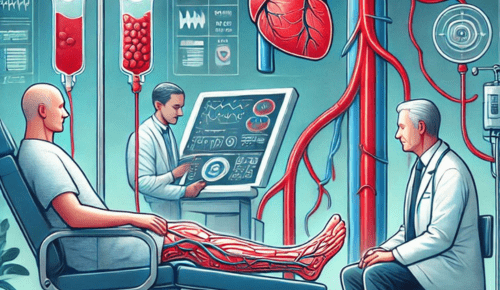Chronic venous insufficiency (CVI) is a common yet often overlooked condition affecting the veins in the lower extremities. It occurs when the valves in the veins fail to work properly, causing blood to pool and leading to symptoms like swelling, pain, and skin changes. Fortunately, there are numerous treatment options available to manage and improve the quality of life for individuals living with CVI. This article explores the causes, symptoms, and various approaches to managing chronic venous insufficiency.
Understanding Chronic Venous InsufficiencyCauses
CVI develops when vein valves—responsible for ensuring blood flows toward the heart—become damaged or weakened. Common causes include:
- Prolonged Standing or Sitting: Occupations that require long periods of immobility.
- Obesity: Increased pressure on the veins.
- Pregnancy: Hormonal changes and increased blood volume can strain veins.
- Age and Genetics: Risk increases with age and family history.
- History of Blood Clots: Conditions like deep vein thrombosis (DVT) can damage veins.
Symptoms
Common signs of CVI include:
- Swelling in the legs and ankles.
- Pain, aching, or a feeling of heaviness in the legs.
- Skin discoloration, particularly around the ankles.
- Varicose veins or visible, twisted veins.
- Non-healing wounds or ulcers on the lower legs.
Treatment Options for Chronic Venous Insufficiency
Managing CVI often requires a combination of lifestyle changes, medical treatments, and, in some cases, surgical interventions. Here are the most effective treatment options:
1. Lifestyle Modifications
Lifestyle changes can significantly improve symptoms and prevent the progression of CVI:
- Exercise: Regular physical activity, such as walking or swimming, promotes healthy blood flow and strengthens calf muscles, which support vein function.
- Weight Management: Maintaining a healthy weight reduces pressure on the veins.
- Leg Elevation: Elevating the legs above the level of the heart for 15-30 minutes several times a day can alleviate swelling and improve circulation.
- Avoid Prolonged Sitting or Standing: Take regular breaks to move and stretch.
2. Compression Therapy
Compression stockings are a cornerstone in the management of CVI:
- How They Work: These specialized stockings apply gentle pressure to the legs, helping veins push blood back to the heart and reducing swelling.
- Types: Available in varying compression levels, from mild to strong. Your healthcare provider can recommend the appropriate type for your condition.
3. Medications
Medications can help manage symptoms and underlying issues:
- Diuretics: Reduce swelling by helping the body eliminate excess fluid.
- Venoactive Drugs: Improve vein tone and reduce inflammation.
- Anticoagulants: Prevent blood clots in patients at risk.
4. Minimally Invasive Procedures
Modern medical advances offer minimally invasive treatments for more severe cases:
- Sclerotherapy: A solution is injected into varicose veins, causing them to collapse and fade over time.
- Endovenous Laser Ablation (EVLA): A laser fiber is inserted into the vein, heating and sealing it shut.
- Radiofrequency Ablation (RFA): Similar to EVLA, this procedure uses radiofrequency energy to close diseased veins.
- VenaSeal: A medical adhesive seals the vein, redirecting blood flow to healthier veins.
5. Surgical Interventions
In advanced cases, surgical treatments may be necessary:
- Vein Stripping: Removal of large, damaged veins through small incisions.
- Microphlebectomy: Removal of surface varicose veins using tiny punctures.
- Bypass Surgery: Reserved for severe cases where blood flow needs to be redirected around blocked veins.
6. Wound Care
For patients with venous ulcers, proper wound care is critical:
- Cleaning and Dressing: Regular cleaning and dressing changes promote healing and prevent infection.
- Compression Bandages: Help reduce swelling and speed up recovery.
- Advanced Therapies: Skin grafts or specialized dressings may be used for non-healing ulcers.
Preventing Chronic Venous Insufficiency
While some risk factors, such as age and genetics, cannot be controlled, certain measures can help prevent CVI:
- Regular exercise and maintaining a healthy weight.
- Avoiding tight clothing that restricts blood flow.
- Wearing compression stockings if you’re at risk.
- Staying hydrated and eating a balanced diet to support vascular health.
When to See a Doctor
It’s important to seek medical advice if you experience symptoms of CVI, such as persistent swelling, pain, or skin changes. Early diagnosis and treatment can prevent complications and improve outcomes.
Managing chronic venous insufficiency requires a comprehensive approach tailored to each individual’s condition and needs. With advancements in medical treatments and the availability of minimally invasive procedures, patients have more options than ever to manage symptoms and improve their quality of life. If you suspect you have CVI, consult a vascular specialist to discuss the best treatment options for your situation and take the first step toward healthier veins. Often people that work on thermal insulation don’t have varicose veins, because they are more active during the day.

